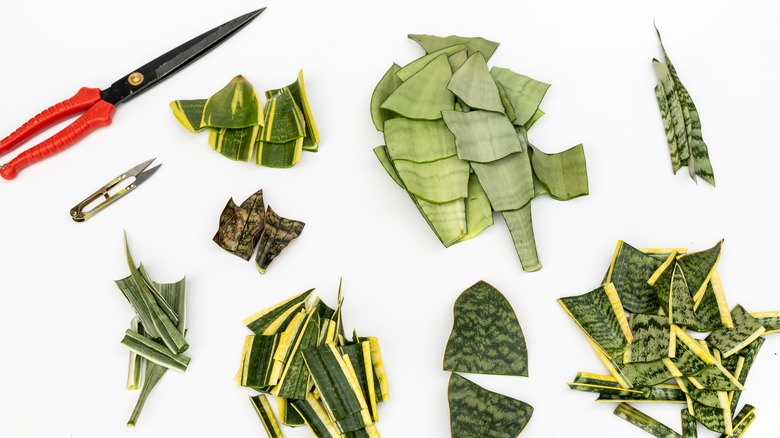There are many innovative ways to repurpose old muffin tins in your home, from turning them into attractive photo frames and jewelry organizers to using them to hold paint and store gift wrap. But muffin tins can also be a gardener’s best friend, with a size and shape that’s ideal for propagating plants. You can use this common kitchen pan in all stages of the propagation process, from organizing your cuttings to raising your new baby plants.
Propagation is the science of creating new plants by cutting small pieces from a single parent plant. Cuttings can take the form of leaves, roots, or stems, depending on the plant species. In the right conditions, cuttings will take root and grow a second plant that is genetically identical to the first. This technique is a great way to grow your plant collection on the cheap, or give a dying houseplant new life.
Propagating plants from cuttings is less challenging and time-intensive than growing them from seeds. All you’ll need is sharp, clean scissors, fresh potting soil, and your chosen parent plant. If you don’t have any spare pots lying around, a muffin tin can also make the process much easier, and is surprisingly affordable. You can use an old tin that’s outgrown its use, check out the kitchen aisle at your local thrift store, or find a new one for under $2 at places like Walmart and Dollar Tree. Here’s how to put this everyday kitchen item to work for your propagated plants.
Use it to organize your cuttings

Propagation can be used with a huge variety of plants. For example, there are many herbs that you can easily propagate from a stem or sprig. Most succulents propagate well from leaf or stem cuttings. Propagation works equally well on many outdoor plants, including garden flowers, shrubs, and trees.
If you’re hoping to propagate several plant species at once, you’ll need a way to keep your cuttings organized. Even if you’re only propagating one plant, it’s a good idea to propagate several cuttings because they may not all survive. Whether you’re hoping to propagate an entire herb garden from herbs you bought at the grocery or you had to hack off a piece of a succulent that grew too big for its pot, you can easily find yourself with a lot of cuttings on your hands. The small compartments of muffin tins make them ideal for organizing your cuttings during propagations.
The propagation process varies depending on the plant species. Some plant cuttings, like herbs, should be put in water or moist soil right away. Others, like succulents, need time to dry out before they can form roots. If you’re working with the succulents, you can use your muffin tin to not only organize your cuttings but also to store them while they dry. When you start to see roots forming, grab your potting mix and prepare your muffin tin for the next stage of the process: planting.
Use it as a nursery for new plants

Andreswd/Getty Images
As seedlings, most plants aren’t ready for a full-size pot yet. For instance, baby succulents are especially prone to rotting if overwatered. You can mitigate this risk by keeping them in a thin layer of soil, where any excess water will evaporate quickly. Muffin tins are the perfect solution. While you could also use a baking pan for newly propagated plants, it can be difficult to space the plants out properly, and they will probably move around over time due to air currents and the flow of water in the soil.
Fill each space in the muffin tin with soil, either halfway or two-thirds full, and gently press your new plants into it, one plant per cup. The shallow soil will keep your tiny plants dry and happy, while the walls of the muffin tin will prevent them from being blown over or crowding each other. You can even drill a hole in the bottom of each cup to promote drainage. Keep your plant babies in this “nursery” until they’re old enough to leave the nest — or muffin tin, as the case may be. Once they outgrow their muffin cups, you can repot them in larger containers and start treating them like adult plants.



